Dreaming of exploring the isolated wilderness, seeing a whale in its natural habitat, or dog sledding under the northern lights? Thankfully for you, Canada and Alaska offer all of that and so much more.
The two destinations are extremely popular amongst adventure travellers, hikers, and anyone looking to experience unspoiled nature firsthand. From mountains to glaciers and the valleys in between, both Alaska and Canada have something unique to offer, making them a must-visit destination to add to your travel list.
If you’re interested in visiting the Great White North but have to decide between Canada or Alaska, here are some of the key differences that will help you make your final decision.
| Canada | Alaska | |
| Highlights | Wide diversity across all provinces, awesome sporting activities, lots of iconic landmarks | Undisturbed nature, extreme isolation, very high chances of seeing the northern lights, great food |
| Peak Season | All year round depending on traveller’s interest | All year round depending on traveller’s interest |
| Size | 9.9 million square kilometres (3.8 million square miles) | 1.7 million square kilometres (656,373 square miles) |
| Population | 37,000,000 | 737,400 |
Why is Alaska not part of Canada?
While it may seem strange that Alaska is separate from almost all of the other U.S. states, the territory is firmly American. Alaska was colonized by Russian fur trappers beginning in 1732, but the land was purchased from Russia by the United States officially on October 18th, 1867. Russia also offered to sell the land to Canada, but the proposal was rejected – the Canadian government claimed they had enough “untamed wilderness.”
Canada
From East to West, Canada is a massive country with something different to offer in every province or territory. That’s one of the major differences between Canada and Alaska: Canada is much, much larger. It’s that diversity that makes a tour of the entire country so amazing, but also very long. A trip across the entire country could take weeks, even months – something that forces many travellers to focus in on an area they want to focus on during their visit.
The Regions
Because Canada is so large, it’s split into five distinct regions.
- The Atlantic Region: This area covers Newfoundland and Labrador, Prince Edward Island, Nova Scotia, and New Brunswick. The East is known for its exciting deep-sea fishing, friendly and laid back locals, delicious seafood, and charming lighthouses. Here you’ll find a deep culture and tradition of music, food, art, and literature, making it a great place for anyone who wants to relax, take in the sea air, and indulge in something different.
- Central Canada: The region includes Ontario and Quebec, two provinces that are home to 80% of Canada’s most iconic landmarks. With lots of big cities to explore, like Toronto, Montreal, and Ottawa, Central Canada is great for anyone who wants to explore some beautiful cities, each with their own unique vibe. From Niagara Falls to the CN Tower, this region is ideal for anyone looking to check a few places off their bucket list.
- The Prairie Provinces: This region includes Manitoba, Saskatchewan, and Alberta, some of Canada’s most picturesque provinces. This is where you’ll find Canadian icons like Banff, Lake Louise, and the endless skies of the Great Plains. This region is great for road trips, camping, and hiking, making it a hotspot for outdoor lovers. With tons of outdoor activities coming out of the region, a trip covering these three provinces isn’t likely to disappoint.
- The West Coast: The West covers British Columbia, home to Vancouver Island, Glacier National Park, and the most spectacular views of the Rocky Mountains. The West is a haven for all things adventure, whether it’s hiking the West Coast Trail, snowboarding in Whistler, or snapping a selfie on the Capilano Suspension Bridge. Alternatively, Vancouver is a modern metropolis filled with amazing restaurants, art galleries, and shopping. It’s a win-win for anyone outdoorsy, with a modern twist.
- The North: This region covers Nunavut, the Northwest Territories, and the Yukon. If you’re looking for somewhere to go that really lets you escape, one of these three destinations is your best bet. Home to some of Canada’s Northernmost cities, like Yellowknife or Whitehorse, the north offers experiences you won’t find anywhere else. Lots of people visit these areas to experience the midnight sun, the northern lights, or bucket list experiences like watching polar bears or going dog sledding.
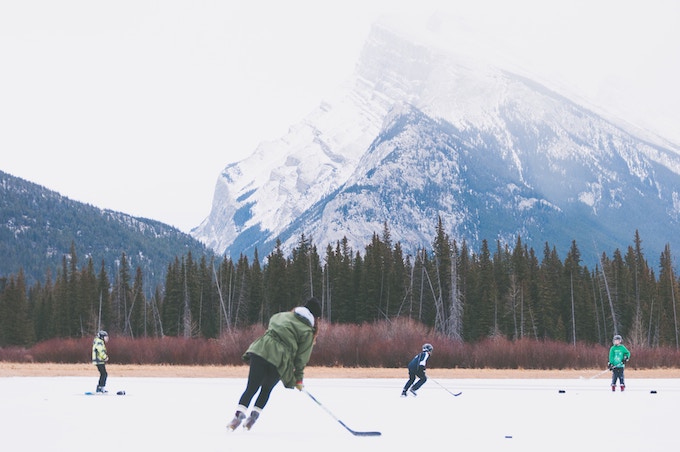
The Seasons
Canada is unique in the sense that it has something to offer travellers all year round. Whether it’s spring or winter, hiking or snowboarding, every traveller can find the season that’s right for them and their interests.
- Spring: For most of Canada, spring starts around April and lasts until June. The exception is the West Coast, where tulips bloom as early as February. Temperatures typically stay above 0°C (32°F) but remain unpredictable – don’t be surprised if it’s still snowing.
- Summer: Contrary to popular belief, summers in Canada are fierce – hot and humid all day long, especially in Central Canada. The further north and west you go, the less humidity you’ll experience, and the longer the days will become.
- Fall: Fall (or Autumn) is one of Canada’s most beautiful seasons. During the months of September and October, you can expect much less humidity and stunning views of bright orange, red, and yellow trees. While it can be rainy in parts of the country, Autumn is undeniably one of the most attractive times to visit the country.
- Winter: Winter covers the months of December to around March. Temperatures vary across the country but for the most part, it’s well below 0°C (32°F) almost every day, with -20°C (-4°F) not being uncommon. Prepare for lots of snow, unless you’re exploring the West Coast were the weather remains pretty moderate.
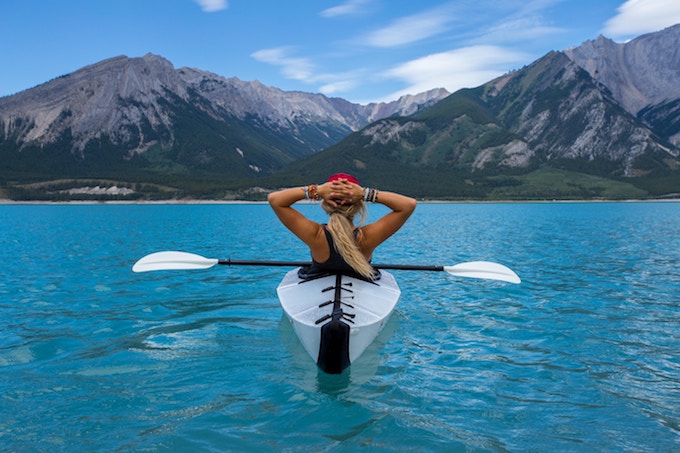
The Wildlife
Canada is huge, so the wildlife you’ll experience will naturally vary from province to province. But with over 200 species of mammals and over 450 species of birds, you’ll be sure to spot some pretty amazing creatures regardless of where you go. Some of the most recognizable animals include:
- Grizzly Bears
- Cougars
- Moose
- Wolves
- Whales (humpback, killer whales, blue whales, etc)
- Beavers
- Bison
- Canada Geese
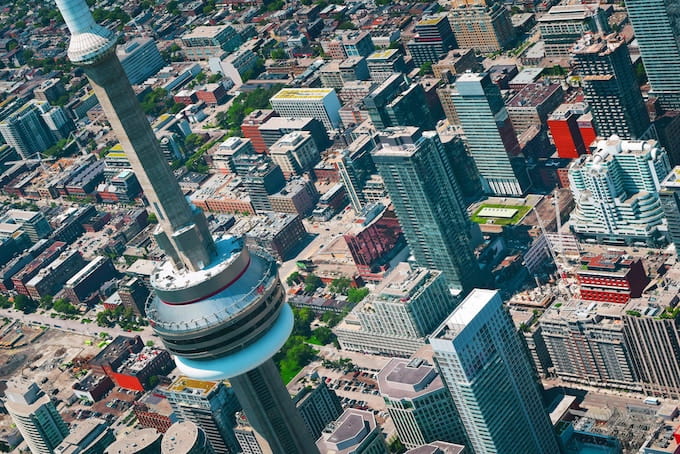
Popular Activities
There are endless possibilities of activities to partake in, from shopping to skating to exploring art galleries. It entirely depends on what your interests are and where you want to visit. That said, some of the most popular and iconic activities include:
- White water rafting
- Playing hockey
- Kayaking
- Whale watching
- Fishing
- Hiking & camping
- Skiing or snowboarding
- Skating
Best Suited For…
Canada is best suited for travellers who are looking to experience a little bit of everything, from enjoying the outdoors to exploring top restaurants. From coast to coast, Canada is vastly diverse, making it an ideal destination for anyone who wants to see a lot during their travels. As a hotspot for outdoor sports, both during the summer and the winter, Canada is perfect for those with an active lifestyle and a love for the outdoors.
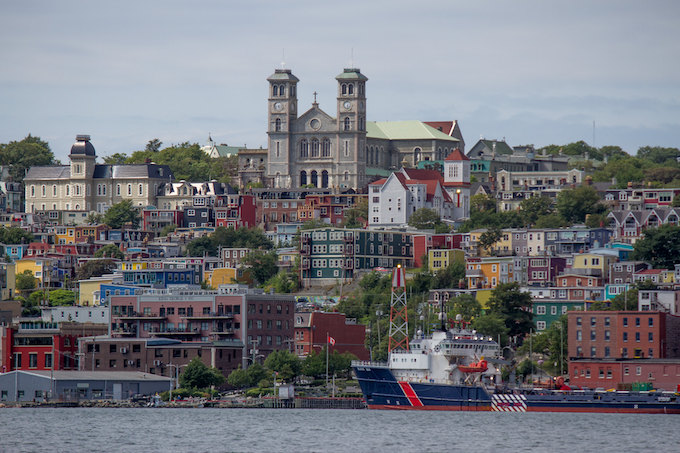
Alaska
Similar to Canada, Alaska is a large state with different things to offer depending on where you go. As the largest state in the US, Alaska is also by far the least densely populated, with only 1.3 persons per 2.5 square kilometre (0.9 square mile). That translates to a large land mass with a lot of uninhabited wilderness. With so much beauty to offer, from stunning fjords to breathtaking glaciers, it’s no wonder tourism to Alaska has steadily increased year over year.
The Regions
Just like Canada, Alaska is also split up into five different regions.
- South Central: The South Central region is one of Alaska’s most popular hotspots for both locals and tourists. A departure point for many cruises and a transportation hub for most flights, Anchorage is an ideal starting point for any Alaskan adventure. Home to an abundance of fishing, hiking, national parks, and the Kenai Peninsula, this region is a must for any Alaskan vacation itinerary.
- Southeast: The Southeast region of Alaska, also known as Alaska’s Inside Passage, is home to some of the state’s most beautiful landscapes. This region is made up of dozens of small islands and a thin stretch of land divided from Canada by the Coast Mountain Range. Charming Alaskan towns are nestled in the valleys of the coastline, making for stunning photo opportunities.
- Southwest: The Southwest region is famous for a handful of things, but most notably its abundance of rare bird species. Every year, dozens of birds fly through Southwest Alaska on their migration route to the Arctic, making this region a popular spot for birdwatchers. Additionally, the area is part of the Pacific’s Ring of Fire, dotted up and down with both active and dormant volcanoes.
- Interior: The Interior region of Alaska is filled with history and beauty. Home to the Alaska Gold Rush in the late 19th century, here you can tour gold mines and learn how to pan for a treasure of your very own. Fairbanks is located under the “Aurora Belt,” meaning it’s one of the best places in the entire world to see the Northern lights. Here, the lights are seen 243 days per year!
- The Far North: As the name suggests, the Far North is the northernmost region in Alaska, encompassing the Arctic Circle. A land of extremes, this sparsely populated region is irresistible to adventure seekers looking for true isolation. The weather can be unforgiving, with lows of well below -30°C (-22°F) and bitterly cold wind. Barrow, the northernmost community in the US, is a popular destination for anyone looking to experience a town of extreme isolation.
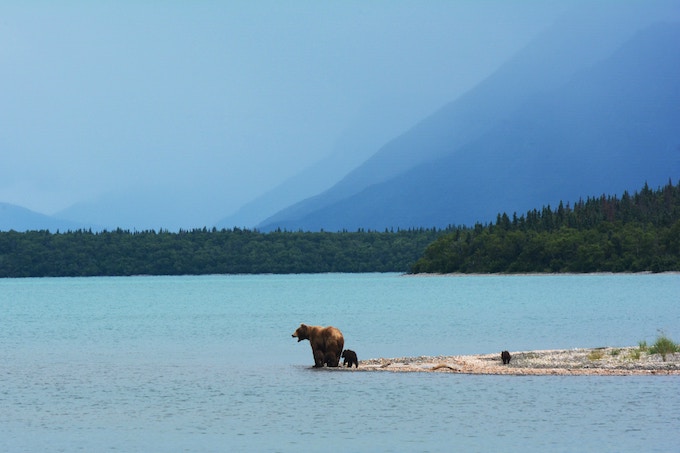
The Seasons
Alaska tends to have two seasons: a winter wonderland or the magical midnight sun. Of course, these seasons are wonderful, but there’s something to explore in Alaska any time of the year; it just depends on your comfort and interest.
- Spring: In the spring (late March to June), Alaska’s landscapes truly awaken. Wildflowers begin to bloom, the birds are warming up, and the days are beginning to lengthen. Temperatures tend to sit around 0°C (32°F), but fluctuate year over year.
- Summer: June to mid-September makes up Alaska’s summer and the beginning of the summer solstice. During this time, the sun seemingly never sets, the animals are active, and the activities seem endless, making it one of the most popular tourist seasons. Average temperatures are around 12°C (54°F).
- Fall: One of the most underrated times to visit Alaska, September, and October makes up the state’s Autumn season. Ideal for hunters and photographers, this is a golden time as the leaves begin to change and the crowds head back home. Temperatures fall around 0°C to 5°C (32°C to 41°C), making it still comfortable to enjoy the outdoors.
- Winter: Winter is easily the longest season in Alaska, lasting from late October to mid-March. The days are short and cold, intimidating most southerners. But the season comes with a sense of stillness, as the snow quietly falls and the Northern Lights dance over the sleeping towns.
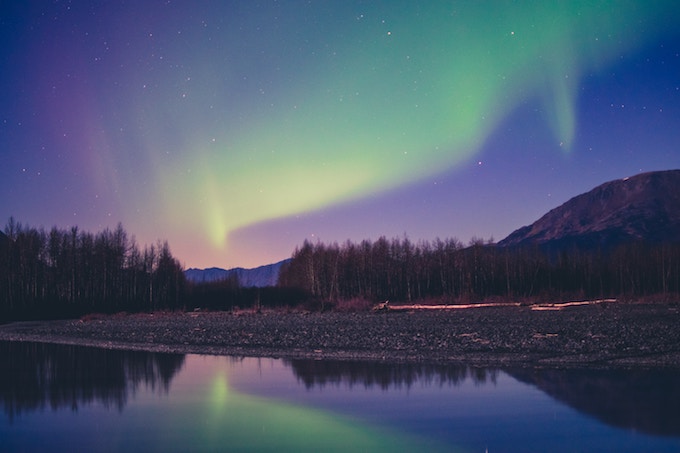
The Wildlife
Like Canada, wildlife in Alaska is abundant and varied. There’s a very high likelihood you’ll run into something during your adventures, so always have your camera ready! Some of the most commonly spotted animals include:
- Polar bears, brown bears, black bears
- Caribou
- Mountain goats
- Bald eagles
- Sea turtles
- Whales (humpback, killer whales, fin whales, sei whales, bowhead whales, etc)
- Dall Sheep
- Raindeer
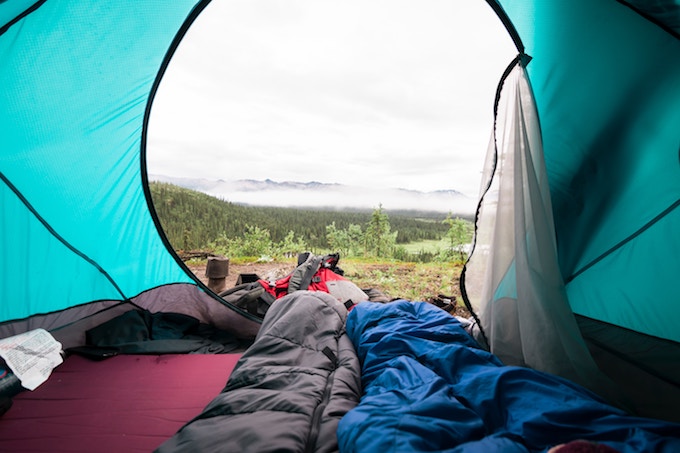
Popular Activities
Because Alaska is home to some of the most amazing wildlife in North America, many of the most popular activities involve the great outdoors. Some of the most common activities for tourists include:
- Hunting
- Bird watching
- Cruising (Alaskan cruises are the most popular way to explore the state)
- Chasing the Northern Lights
- Dog sledding
- Hiking & camping
- Snowshoeing
- Wildlife tours
Best suited for…
Alaska is best suited for travellers who want to experience the outdoors in a more isolated style. This is one destination that can promise some serious peace and quiet, making it the ultimate escape for any wilderness explorers and extreme adventurers. On the flip side, Alaskan Cruises make for a great alternative to “roughing it” in the wilderness, while still experiencing all that this stunning state has to offer.
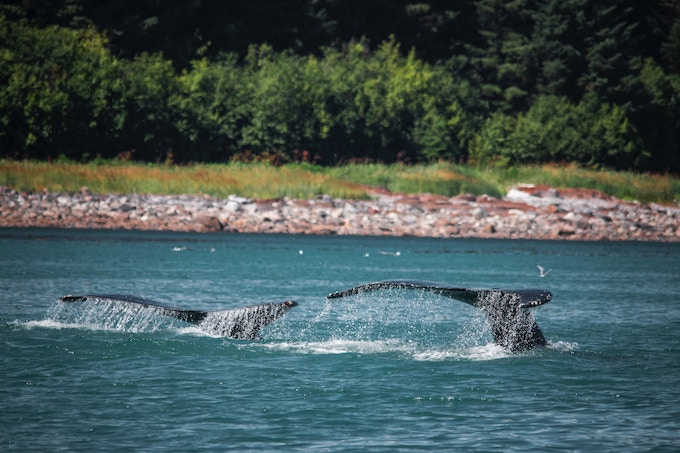
Whether you choose to visit Alaska or Canada, one thing is for sure – you won’t be disappointed. Both countries offer some of the most beautiful landscapes and unique wildlife, so know that wherever you choose to explore, there’s no wrong decision.


